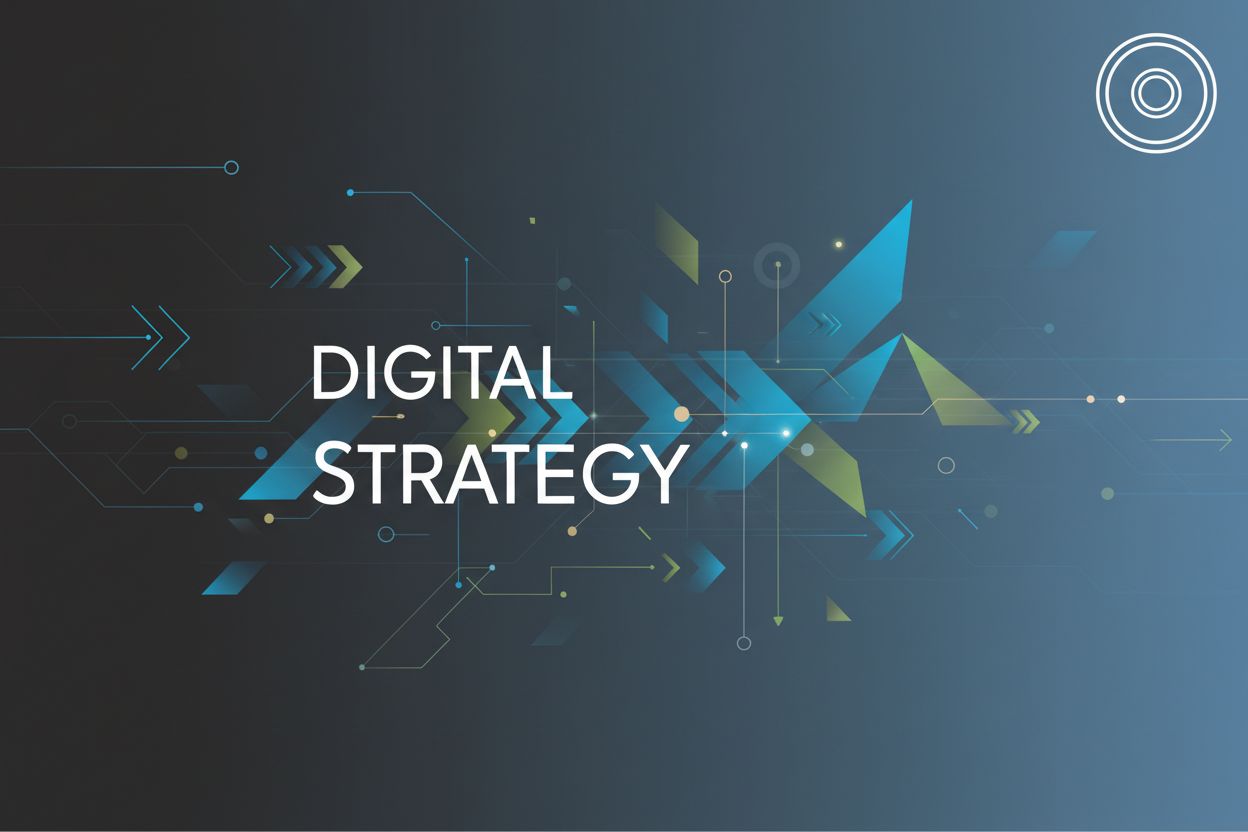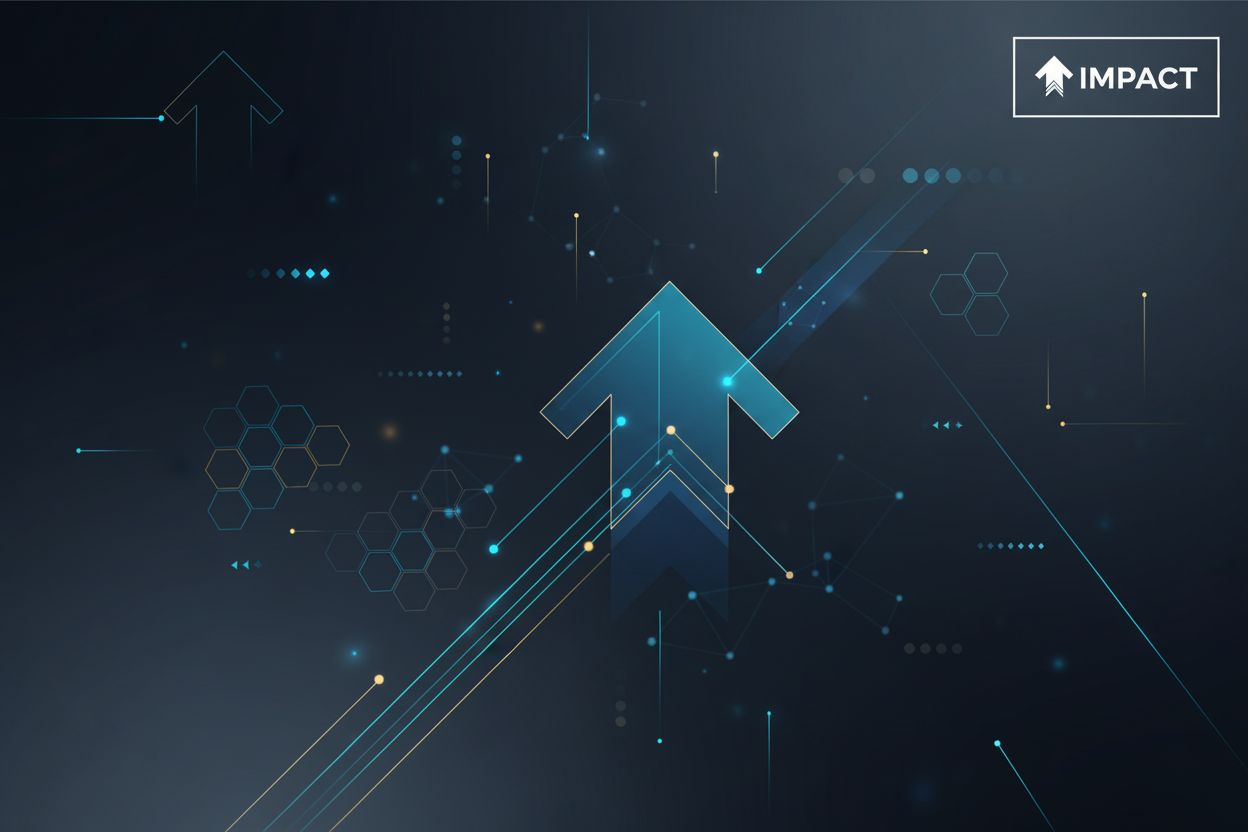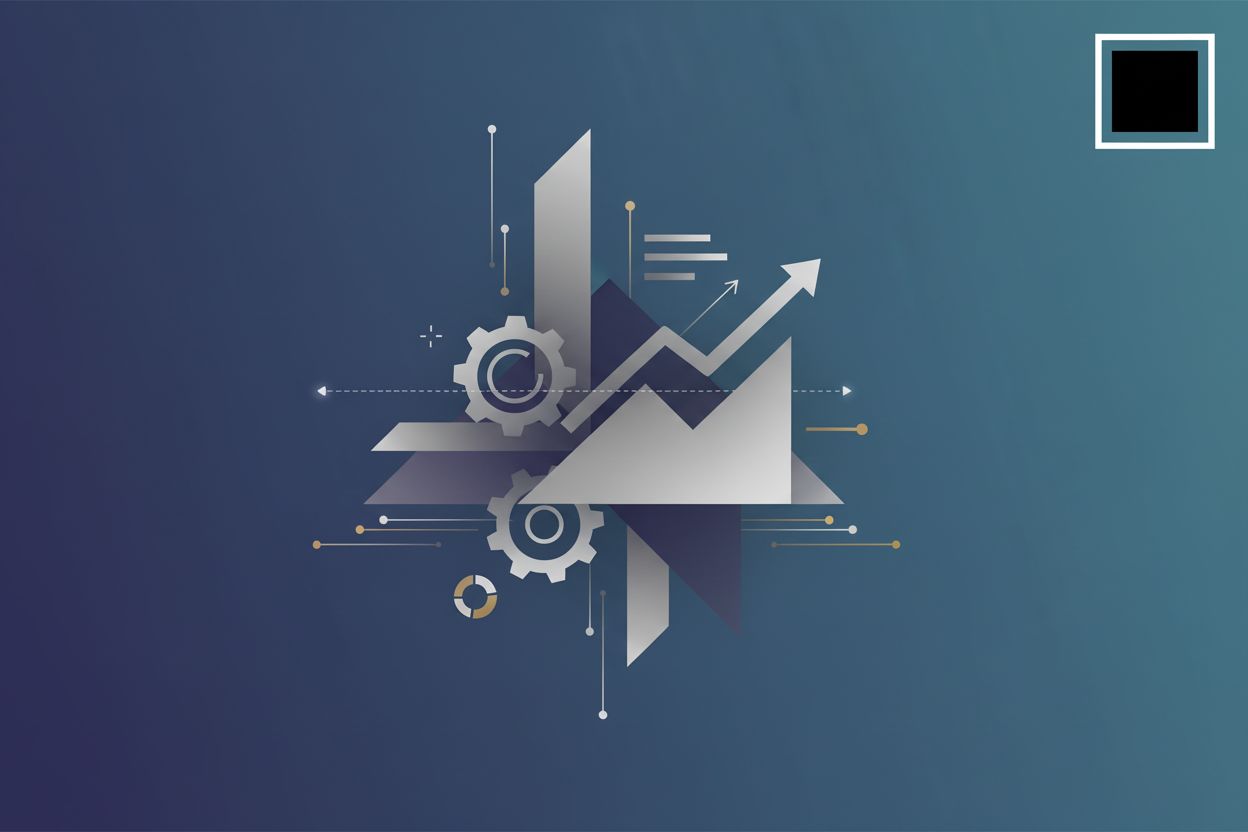The Future of Digital Transformation: Trends for 2025
TL;DR
Understanding the Shifting Sands of Digital Transformation
Alright, let's dive into the digital transformation landscape, shall we? It's kinda like watching sand dunes shift, isn't it? Always changing, always keeping you on your toes.
So, why is everyone and their grandma suddenly obsessed with digital transformation? Well, here's the deal:
- Stayin' Alive: Businesses are feelin' the pressure to evolve or, you know, become totally irrelevant. It's a dog-eat-dog world out there, and digital adoption is, like, your survival kit.
- Customers Demand It: People expect things to be seamless, intuitive, and, dare I say, magical. If your digital game is weak, they'll bounce.
- Opportunity Knocks: New tech isn't just about keeping up; it's about leapin' ahead. Think efficiency, innovation, and all those buzzwords that actually mean somethin'.
But, what's really changed since like, the last decade? It's not just about slapping some code on an old system anymore.
- Integration is Key: We've moved past simple digitization to complex, integrated strategies. It's about makin' everything talk to each other, not just havin' a fancy website.
- Data, Data Everywhere: Decisions used to be based on gut feelings, but now? It's all about the data, baby. Personalization is the name of the game, and data's how you play.
- Up in the Cloud: Cloud computing and ai are no longer niche things. It's kinda everywhere now.
Now, as we move forward, its important to know why digital transformation is no longer, like, optional.
Trend #1: Agentic AI - The Democratization of AI
Agentic AI is more than just a buzzword; it’s about making ai accessible to everyone, not just the tech wizards. Imagine regular folks building AI-powered solutions without needing a Ph.D. in machine learning. Sounds kinda wild, right?
Agentic ai is, essentially, leveling the playing field. It's empowering non-technical peeps to actually use ai tools and solutions, making innovation less of a bottleneck. Think of it as the "democratization of ai," but with a cooler name.
- Low-code/no-code platforms are the unsung heroes here. They're making ai more accessible and, crucially, actionable. Instead of wrestling with complex code, you're dragging and dropping your way to ai-powered magic.
- This trend's accelerating innovation and efficiency across departments. Seriously, imagine marketing, hr, even accounting building their own ai tools! That kinda agility can be a game-changer.
So, how does this actually work? Let's get into some examples. Marketing teams can craft ai agents to tailor interactions, boosting engagement. Think personalized ads that don't feel creepy, or chatbots that actually understand what you're asking.
AI agents can also transform complex content into accessible formats. Got a dense white paper? An ai agent can summarize it, translate it, even turn it into a fun infographic. It's all about making info digestible.
And it's not just for small teams. Organizations can scale ai capabilities through enterprise ai agents. Imagine a whole network of ai helpers, each handling specific tasks, all working in harmony.
But hold on, it's not all sunshine and rainbows. With great power comes great responsibility, and agentic ai definitely has its challenges. First off, we need to address governance gaps and ensure data ethics and security. If everyone’s building ai, who's making sure they're playing by the rules?
Then there's the illusion of simplicity. Just because it's easy to build something doesn't mean it's good. You still need quality input data and a clear understanding of what you're trying to achieve.
Finally, building enterprise-level solutions that support both lines of business and it is crucial. It can't just be a wild west of ai projects.
As we look ahead, it's clear that agentic ai is here to stay. Now, let's talk about building resilient applications for critical operations.
Trend #2: Building Resilient Applications for Critical Operations
Building apps that can actually, you know, withstand the chaos of the real world? Yeah, that's where it's at. It's no longer just about making something, but making sure it stays up.
Organizations are leaning hard on digital systems, no doubt about it. I mean, everything from customer service to supply chains are running on these things. So, like, if it goes down? Chaos ensues.
- Customer trust goes poof!: Nobody likes a website that's always crashing, right?
- Data? Gone! If your systems are down, you can't protect data. And that is bad.
- Recent outages? A wake-up call. The Microsoft and aws disruptions showed how fragile things can be, Logic20/20 reported.
So, how do we make things, well, unbreakable? It's not magic, but it does involve some cool tech.
- Cloud-native architectures are scalable and flexible. If one part fails the rest can pick up the slack.
- Microservices let you isolate problems. Think of it like Christmas lights: one bulb goes out, the whole string doesn't die.
- AI-driven automation monitors things. It spots weird stuff and fixes it before it becomes a full-blown disaster.
- Continuous testing and monitoring is key. Gotta find those weak spots before they cause trouble.
Think about healthcare. Hospitals need their systems always online, and they are using cloud-based tools to monitor patients remotely. If the system goes down, a patient's life could be at risk.
Or, consider financial services. Banks need constant uptime to process transactions.
Okay, so what can disrupt these systems? A lot, actually. You've got cyberattacks, natural disasters, human error (whoops!), and even supply chain issues. All can bring systems to a halt.
The goal is to minimize downtime and protect the important stuff. You also gotta think about your reputation and staying compliant with regulations.
Resilient application for critical operations are no longer a luxury, but a necessity. Now, let's talk about how hyper-personalization is changing the game.
Trend #3: Hyper-Personalized and Invisible Customer Experiences
Did you ever feel like your phone knew what you wanted before you did? That's the goal with hyper-personalized experiences. It's about making things so seamless, so intuitive, that customers barely realize how much tech is working behind the scenes.
It's not just about puttin' someone's name on an email anymore. We're talkin' about experiences that adapt in real-time, predict needs, and just generally make life easier.
Invisible intelligence is the magic sauce makin' this happen, according to Logic20/20. It's systems that proactively solve problems without a user even lifting a finger. Think smart homes that adjust the thermostat based on your sleep schedule, or apps that suggest exactly what you need before you even search for it.
- Natural interfaces are the name of the game. Ditchin' clunky menus for voice assistants and chatbots that actually understand what you're sayin'. It's like talkin' to a super-helpful, always-available friend.
- Hyper-personalization is all about makin' each customer feel like they're the only one that matters. Data's the key, analyzin' mountains of it to deliver messages, product recommendations, and experiences that hit home.
- Agentic ai companions are takin' chatbots to the next level. We're talkin' virtual assistants that can understand your emotions and react accordingly. Like a digital buddy that actually gets you.
But here's the thing - folks are willin' to share their data, but they expect somethin' in return. Value, transparency, and ethical practices are non-negotiable.
- Companies are investin' big in ai infrastructure to make this happen, buildin' the data pipelines and algorithms to process all that info.
- User experience (ux) is becomin' more important than ever. If somethin's clunky or confusing, people are gonna bounce.
- Transparency is key to building trust. People need to know how their data is being used.
Imagine walkin' into a store, and the staff already knows your size, your favorite colors, and what you're lookin' for. That's the kinda experience hyper-personalization is strivin' for. It's about makin' every interaction feel personal and relevant.
As customer expectations continue to evolve, lookin' ahead, the next trend is all about resilient applications for critical operations.
Trend #4: Adaptable Processes and Empowered Teams
Okay, so picture this: you're trying to build a sandcastle, but the tide keeps coming in. That's kinda what running a business feels like these days, right? Constant change, constant adjustments, it's wild!
Businesses that can roll with the punches, adapt quickly, and empower their teams? Those are the ones who'll win. It ain't about being the biggest anymore; it's about being the most nimble.
- Finding what actually works is key. What worked last year? Might be totally useless now. It's about constant experimentation and not being afraid to ditch what isn't, you know, jiving.
- Empowered teams are happy teams. And happy teams are productive teams. Give people the autonomy to make decisions, to innovate, and watch them fly.
- Customer value, duh! If you're not solving a real problem for your customers, then what's the point? Focus on those high-impact needs and address them fast.
What happens if you get stuck in your ways? Well, buckle up for some pain:
- Missed opportunities galore. Too much structure? you'll be slow to market, losing out on those sweet investment dollars.
- Employee exodus! Seriously, nobody wants to feel like a cog in a machine. People want to contribute, to innovate, not just follow orders blindly.
- Processes that suck. Poor processes that can't keep up with tech? It's like trying to run a marathon in flip-flops.
So, how do you build a team that's ready for anything?
- Processes that are flexible. Build them so they can respond to constant change. Think modular, think adaptable.
- Training, coaching, mentoring. Invest in your people. Make them resilient.
- Psychological safety is a must. People need to feel safe to speak up, to challenge the status quo, to innovate.
- Leaders who get it. Leaders who can embrace change, not fear it.
You know, it's about creating a culture where change isn't a threat, but an opportunity. Make your people resilient, and the business will follow. Next up, we'll dive into another trend... Modernizing ot, but it's not just about tech.
Trend #5: Modernizing OT with Cloud Adoption
Okay, so, get this: Operational Technology, or OT, used to be that weird department nobody understood. Think factory floors, power grids. Now? It's getting a cloud makeover, which is kinda like giving your grandpa a smartphone – potentially awesome, but needs a bit of hand-holding.
- Integrating ot into cloud ecosystems is a big deal now; it's not as simple as just moving files to the cloud. It's about making those critical systems more efficient and scalable. Think energy grids that respond better to demand, or factories that can predict when equipment is gonna break down before it actually does.
- This convergence unlocks new potential, like better resilience and real-time insights. But, it also means rethinking how these systems are managed and secured. You can't just apply the same old it security measures to ot; it's a whole different ballgame, and its important to learn about it.
- Utilities are leading the charge. They are testing cloud-enabled solutions like distributed energy resource management systems, or derms, to manage energy grids better. However, that doesn't mean there aren't compliance hoops to jump through.
It's not a free-for-all, though. Compliance obligations are a biggie, especially in sectors like energy. Organizations are taking a phased approach – baby steps, really – to avoid, you know, blowing up the power grid.
Cloud adoption and modernizing ot systems is a necessity, and it is going to become even more necessary.
Alright, so next up, let's talk about navigating compliance.
Future-Proofing Your Brand: Actionable Steps for Brand Managers & CMOs
Okay, so you're a brand manager or cmo, right? Ever get that feeling like you're chasin' your tail tryin' to keep up with all this digital transformation stuff? It's a lot, i get it.
- AI and automation: It's not just hype, it's about makin' things easier. Think about ai tools that can predict customer behavior -- that's gold, especially when you are trying to understand what the customers want.
- Cloud infrastructures: Gotta have that solid base, ya know? Resilient cloud setups mean less downtime, and that means happy customers. No one wants a website that's always crashin'.
- Cybersecurity: Seriously, this is non-negotiable. Protecting data is like, rule number one. Plus, customers need to know they can trust you.
- Sustainable IT: It's not just a trend; it's the right thing to do. Plus, customers are payin' attention to this stuff now.
Gotta keep that innovation engine hummin'. It's the only way to stay relevant, honestly.
- Learning and Experimentation: Encourage your people to try new things, even if they fail. That's how you learn, right?
- Empower Your Employees: Give 'em the tools they need, and then get out of their way. Happy employees mean happy customers.
- IT and Business Teams: Gotta get these guys talkin'. Silos are so last year.
So, get those investments in place, foster that innovative culture, and you'll be ready for whatever the future throws at ya. Now, let's talk about how to partner with GetDigitize...
Navigating the Future: Embracing Trends to Lead
Okay, so, where do we go from here, right? All these trends swirling around – it can feel like trying to nail jelly to a wall. But honestly, it's not about predicting the future, it's about getting ready for whatever comes next.
See, the thing is—organizations need to really lean into these innovations to shake up their operations and give customers something they actually want. It's not enough to just, like, have ai; you gotta use it to really change how you do things.
- Think about it: organizations needs to be quick and agile. If they are, they can re-imagine operations and deliver customer value. For example, it's not enough for a bank to have a mobile app; it needs to anticipate customer needs in real-time, maybe offering personalized loan options before they even search for them.
- Resilience, personalization, and innovation aren't optional anymore; they're basically the table stakes for staying in the game. As mentioned earlier, resilient apps are non-negotiable now.
- And, let's be real, that means changing how you think. A cultural transformation towards experimentation and collaboration is, like, totally essential. You can't just slap new tech on old processes and expect magic. It's about getting everyone on board with trying new things, even if they fail sometimes.
According to Logic20/20, organizations aren't just reacting to advancements in ai, cloud technologies, and customer engagement; they're leveraging these innovation to change how they operate.
So, what's the takeaway? It's not enough to just talk about digital transformation. You gotta do it – and do it with a mindset of constant learning and adaptation.
That's all folks!




